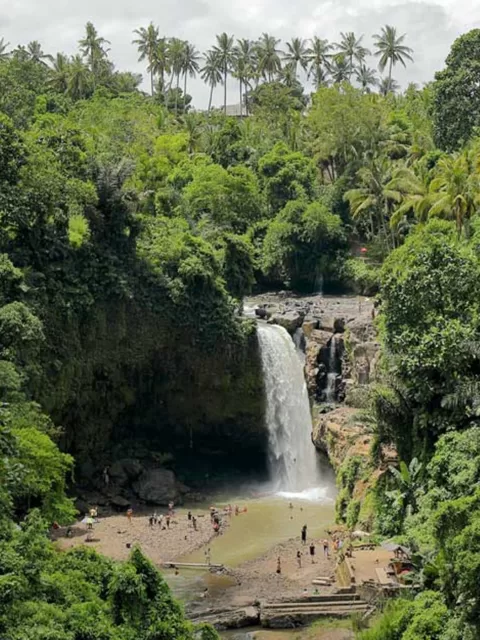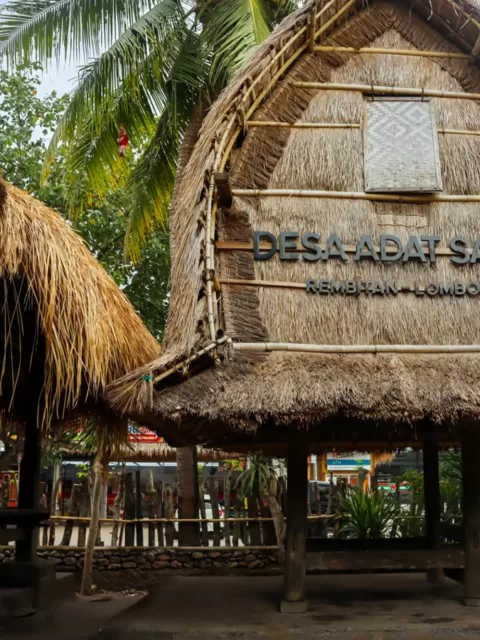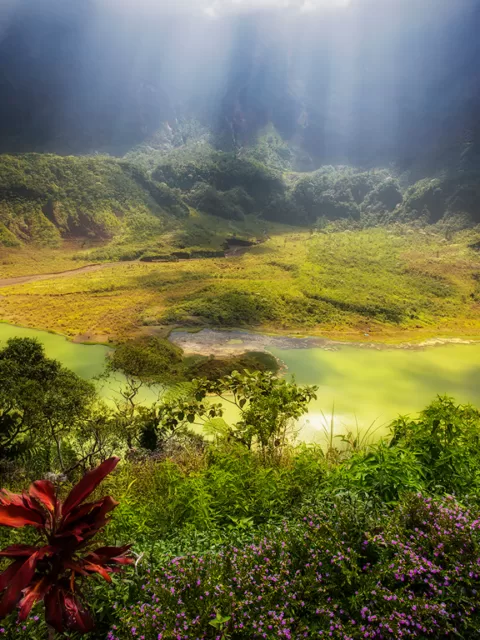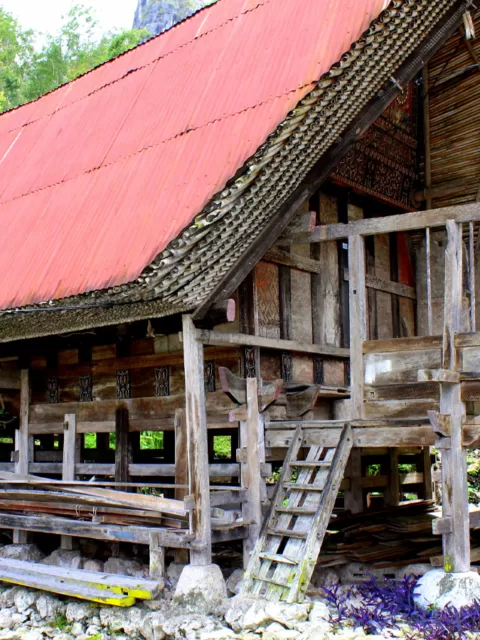Angklung Indonesia’s Musical Marvel
In the heart of Indonesia, amidst the rich tapestry of culture and traditions, there exists a musical gem that transcends boundaries and captivates hearts – the Angklung. This melodious instrument, with its roots deeply embedded in Indonesian culture, is not only a source of music but also a symbol of unity and community. Join us on a harmonious journey through the world of Angklung, where music becomes a language that speaks to the soul.

The Angklung’s Origins
The word “Angklung” is onomatopoeic, representing the sound of the instrument when it is shaken. This traditional Indonesian musical instrument is made of bamboo tubes of varying lengths, each producing a specific note when struck. Originating from the Sundanese people of West Java, the Angklung dates back to as early as the 7th century. Its historical significance and cultural importance have earned it a place on UNESCO‘s Representative List of the Intangible Cultural Heritage of Humanity.
Read more: Indonesia tourism official website
A Musical Symphony of Bamboo
What makes the Angklung truly remarkable is its communal nature. Unlike many other musical instruments, the Angklung is played in groups, with each player responsible for a specific note. The intricate melodies and harmonies that emerge from these bamboo tubes are a testament to the collective effort and synergy of the ensemble. It’s a beautiful representation of Indonesia’s philosophy of “gotong royong,” which emphasizes cooperation and mutual assistance within a community.
Angklung: More Than Just Music
The Angklung is not merely a musical instrument; it’s a cultural ambassador that bridges generations and preserves traditions. It plays a significant role in various Indonesian rituals, ceremonies, and celebrations. From welcoming guests to a traditional wedding to accompanying folk dances during harvest festivals, the Angklung’s sweet melodies infuse life’s most important moments with joy and meaning.
Education Through Angklung
In recent years, the Angklung has also found its way into educational settings. Schools and cultural organizations across Indonesia have recognized its potential as a tool for teaching and fostering a sense of cultural pride. Children and young adults are taught to play the Angklung, ensuring that this cultural treasure continues to be passed down to future generations.
Angklung on the Global Stage
The Angklung’s enchanting melodies have transcended national borders, captivating audiences worldwide. It has been featured in international music festivals and cultural events, earning admirers from different corners of the globe. Indonesian Angklung ensembles have become ambassadors of their culture, sharing the beauty and harmony of Indonesia’s musical traditions with the world.

Nestled in the verdant Sunda Valley of West Java, Indonesia, an orchestral melody emerges, not from strings or brass, but from a forest’s whisper made musical—a symphony played on bamboo. This is the sound of the angklung, Indonesia’s traditional music at its most enchanting, a testament to the nation’s profound musical craftsmanship that has, for generations, crafted rhythm out of wood and air.
The angklung, constructed from a series of bamboo tubes secured in a bamboo frame, is a unique instrument that produces sound when shaken. Its pitch determined by the length of the tubes, the angklung is a Sundanese cultural heritage that embodies the community spirit of the region. Each performer in an angklung ensemble holds a single note or more, and only through cooperation can they perform the intricate melodies and harmonies of the pentatonic scale that characterize Indonesian traditional music.

In a Javanese orchestra or gamelan ensemble, the angklung’s percussive melody harmoniously complements the metallic resonances of gongs and xylophones. The angklung, however, is more than an instrument; it is a medium through which stories and emotions travel, a tool for education, and a symbol of unity. At places like Saung Angklung Udjo, a cultural space and educational center in Bandung, visitors can not only witness traditional ensemble performances but also delve into the heart of Indonesian ethnic music.
The crafting of these pitched bamboo rattles is an art in itself, passed down through generations, reminiscent of the Sunda Valley rhythms. This art form is so valued that it has garnered recognition from UNESCO as an Intangible Cultural Heritage, preserving the intricate techniques of bamboo instrument crafting and the traditional music education they support.
The angklung’s harmonic scale is an echo of Indonesia’s diverse and rich history. Tuned to the pentatonic scale, a musical structure that dates back to ancient times, the angklung’s music is a thread woven through the fabric of Indonesian identity. It is in the bamboo thickets of Indonesia that the raw material for this West Java cultural icon is sourced, and it is in the hands of skilled artisans that this raw material is transformed into an instrument capable of stirring souls.

Each year, the gamelan ensemble and angklung orchestras draw tourists to Bandung, making it a vibrant attraction not just for its natural beauty, but for its cultural pulse. Here, the spirit of Asia’s folk music thrives, and the traditions of Indonesia’s ancestors continue to inspire and educate.
Through performances that range from the solemn to the celebratory, the angklung speaks a universal language. It tells of the land it comes from, the people who play it, and the collective harmony of Indonesian society. In the hands of a group, it is more than an instrument—it becomes a chorus of unity, an emblem of the country’s enduring heritage, and a living melody that resonates with the heartbeats of Indonesia.
The angklung and its music remain a testament to the cultural richness of Indonesia. They serve not just as a reminder of the past, but as a beacon for the future, demonstrating how tradition can be a melody that carries forth the stories and spirit of a nation, resonating through the ages.
Education Through Melody
In Indonesia, music education isn’t confined to the four walls of a classroom; it blossoms in open pavilions and amongst the community. Here, children are introduced to the traditional scales and rhythms of their heritage from a tender age. The angklung serves as an ideal instructional tool due to its simplicity and the necessity for group performance. It teaches children the importance of teamwork and harmony, as each note they produce is vital to the completion of a piece. Saung Angklung Udjo, in particular, is not just a tourist destination but a living classroom where the ethos of cultural preservation through education is vibrantly alive.

Crafting the Bamboo Melody
The process of making an angklung is as much a ritual as it is a craft. Artisans select bamboo with the perfect age and thickness, ensuring the material will produce the clear, resonant tones the instrument is known for. The bamboo is cut, cured, and carefully whittled into smooth tubes of varying lengths. Each angklung is then meticulously tuned to reflect the notes of the diatonic or pentatonic scale. This attention to detail reflects a broader philosophy prevalent in Indonesian craftsmanship: that creating beauty is a deliberate and thoughtful process, worthy of time and respect.
Gamelan: The Ensemble’s Heartbeat
The gamelan ensemble is the cornerstone of traditional performance arts in Indonesia, and the angklung is a vital member of this musical family. Gamelan orchestras, predominantly found in Java and Bali, are known for their elaborate musical textures and rhythmic layers. When the angklung joins this ensemble, it adds a distinctive voice that enhances the collective sound. The gamelan’s music is integral to various aspects of Indonesian life, from religious ceremonies to royal events, and in each, the angklung plays its part, echoing the cadences of centuries-old traditions.
Intangible Heritage to Global Marvel
UNESCO’s recognition of the angklung underscores its value as a cultural treasure, not just for Indonesia but for humanity as a whole. This designation has propelled the instrument onto a global stage, where it is celebrated as a symbol of cultural identity and collective endeavor. The angklung is now not only heard in the valleys and hills of West Java but in concert halls and festivals around the world, representing Indonesia’s rich cultural offerings.

Bandung: The City of Music
Bandung, the capital of West Java, hums with the resonance of the angklung. Streets lined with vendors and artisans selling musical instruments made of bamboo reflect the city’s rhythmic soul. For travelers, a visit to Bandung is incomplete without experiencing the enchanting performance of an angklung orchestra. The music, often accompanied by traditional dance, tells the story of a culture that is vibrant, dynamic, and deeply rooted in the past.
Melody in Unity
The angklung encapsulates the Indonesian principle of ‘gotong royong’, or communal cooperation. In an angklung ensemble, no musician is a soloist; all must work together to produce the full range of the melody. This concept transcends the musical realm and is reflective of the social fabric of Indonesia, where community and mutual assistance are the cornerstones of society.
Festivals and Celebrations
Throughout Indonesia, festivals celebrating the angklung and traditional music are common. These festivals are not only showcases of musical prowess but also opportunities for communities to gather and for the younger generation to immerse themselves in their cultural legacy. The echoes of bamboo instruments through these festivals bridge the gap between the old and the new, the past and the present.
The Resonance of Tourism
As a tourist attraction, the angklung and its music play a vital role in Indonesia’s cultural tourism. Visitors are often invited to participate in workshops where they learn to play the instrument, offering them a tangible and memorable connection to Indonesian culture. This interactive aspect of cultural exchange highlights the angklung’s role in promoting understanding and appreciation across different cultures.
Preservation and Innovation
The future of the angklung is bright, with artisans and musicians alike exploring innovative ways to keep the tradition alive while making it relevant for new generations. From fusion music that blends traditional angklung sounds with contemporary genres to the use of social media to share music and crafting techniques, Indonesians are finding creative ways to ensure their musical heritage adapts and thrives.

Conclusion: A Symphony of Culture
The angklung is far more than an instrument; it is a living symbol of Indonesia’s cultural vibrancy, a representation of community spirit, and a vehicle for education and preservation. Its music resonates with the story of a nation that values harmony—in art, in nature, and in society. As a UNESCO Intangible Cultural Heritage, it carries the weight of a legacy that transcends borders, and as the centerpiece of festivals, educational programs, and tourist experiences, it continues to captivate and inspire.
Conclusion
The Angklung is more than just an instrument; it’s a symbol of Indonesia’s cultural diversity, unity, and resilience. Its enchanting sounds remind us that music has the power to transcend language and connect us on a profound level. So, whether you find yourself in a bustling Indonesian city or a serene village, listen closely, and you may just hear the sweet melodies of the Angklung, a testament to the enduring beauty of Indonesia’s musical marvel.












